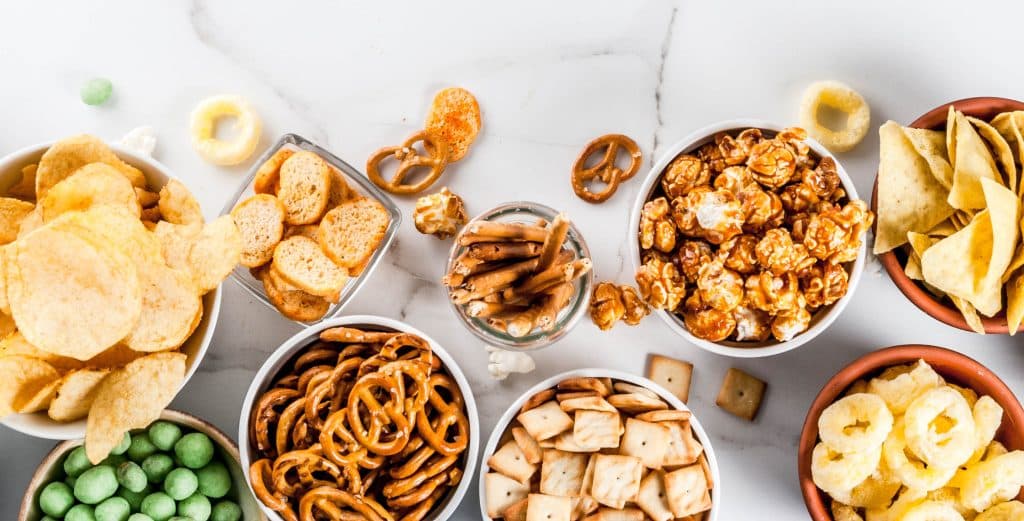As each demographic ages, their snacking habits shift. Circana’s Darren Seifer digs into the company’s recently released The Future Of Snacking report, providing insights on who is snacking on what.
By Darren Seifer
Source: candyusa.com, October 2023
Washington — It’s been well established that snacks and treats are integrated into consumers’ daily lives. The typical U.S. consumer has a between-main-meal occasion about 700 times per year, but factors like life stage and need state changes can shift what’s consumed and why it’s consumed.
Circana, the company formed by the merger of Information Resources, Inc. and The NPD Group, Inc., recently released a report called The Future of Snacking, which forecasts snacking and treating behaviors through 2025. While each generation represents pockets of growth opportunities, the industry must be laser focused on shifting consumer needs since total snacking and treating consumption growth is expected to lag population growth.
While the pandemic is still with us, consumers are learning to cope with it in their daily lives and have returned to commuting and outdoor activities. I’ve been calling this the boomerang effect. As we all know, a boomerang is designed to come back to you after it’s thrown, but usually, it’s close and not in the exact same spot.
The year 2020 was far from an average year for consumption behaviors, but 2022 was more in line with 2019 consumption trends. Greater away-from-home needs, convenience and shorter meal preparation times were typical 2022 trends that didn’t revert fully to 2019 levels, meaning we’re at a new normal.

Several categories that had pandemic-induced growth are retreating as consumers settle back into more typical daily routines. And the impact of life-stage shifts is coming back into focus as a primary driver of future snack food consumption.
Gen Zs, for example, are entering a deceleration phase as they mature into early adulthood. Their forecast is down nearly across the board. Millennials and boomers are on a plateau, meaning little to no growth should be expected from either.
Gen X should exhibit some snacking growth, but the demographic is too small to move the needle overall. That leaves Gen Alpha, the generation younger than Gen Z, as the group that will drive most future snacking and treating growth.
The challenge for manufacturers and retailers in marketing to Gen Alphas is understanding their parents’ influence and snacking needs. Young kids are more likely to request indulgent snack foods, but when adults choose their kids’ snacks, they often select fresh fruit or trail mix.
For other generations with negative forecasts, there are still strong opportunities to drive growth for your products. The trick will be to meet these generations’ changing needs.
In any declining market or category, there are always winners who succeed by deeply connecting with shifting need states. For example, in 2020, several restaurant operators grew traffic with solutions that provided consumers with socially distanced delivery or pick-up, and offered familiar comfort foods at affordable prices.
Mapping Opportunities For Growth
While factors like social distancing are less relevant today, the goal is the same — drive growth in a declining market by flawlessly executing against consumer needs.
With the return to office work, for example, consumers need more on-the-go packaging at affordable prices, so they can eat while commuting or at their desks with no messy cleanup. Envision a person who is typing with one hand and snacking with the other. How can you be in that other hand?
While Gen Z’s forecast is negative overall, certain needs will grow. Younger Gen Zs will seek better-for-you snack options that are healthier than fully indulgent items. You can meet that need with great-tasting products that don’t go overboard with sugars.
Older Gen Zs will seek more indulgent items. You can help them by providing solutions that offer a temporary break from daily stressors.
For longer-term growth, marketers should lean into millennials now. After 2025, the leading edge of that generation will start entering a life stage when snacking and treating behaviors accelerate. Gen X is currently in that life stage, but millennials should drive more growth given the larger size of their generation.
Additionally, a need state expected to grow with millennials is favorite routines. They should increasingly snack and treat out of habit or routine and will do it with products they consider their favorite to give them a sense of joy.
Looking ahead, you can expect them to reach for favorites they are currently establishing.
Future growth with this generation will hinge on how deeply marketers form emotional attachments now that will carry on later in their lives.
The future of snacking and treating will be challenging, but brand marketers can sustain growth by shifting their tactics to meet consumers’ changing life stages and need states.

Contributor Info: Darren Seifer is a food & beverage industry analyst at Circana and a contributing author of the “Eating Patterns in America” and “The Future of Snacking” reports. He has worked for Circana since 1999, providing insights based on food-related research to organizations and companies across the country. He can be reached at darren.seifer@circana.com.

